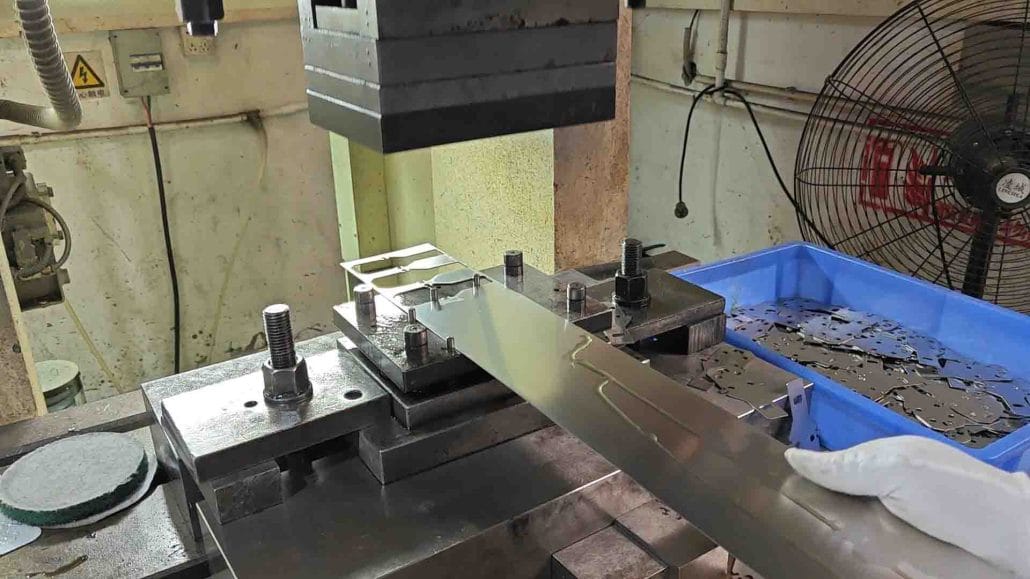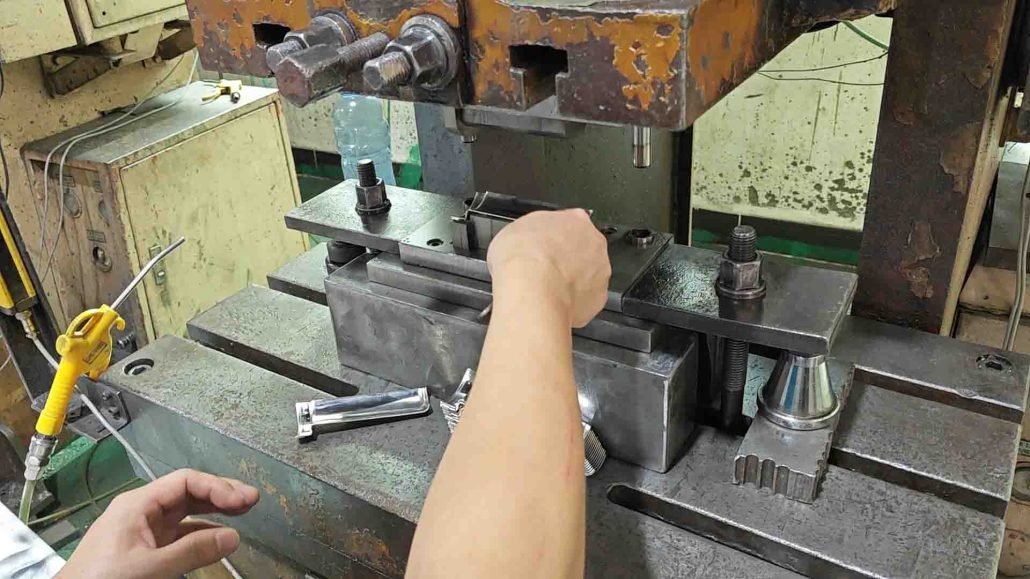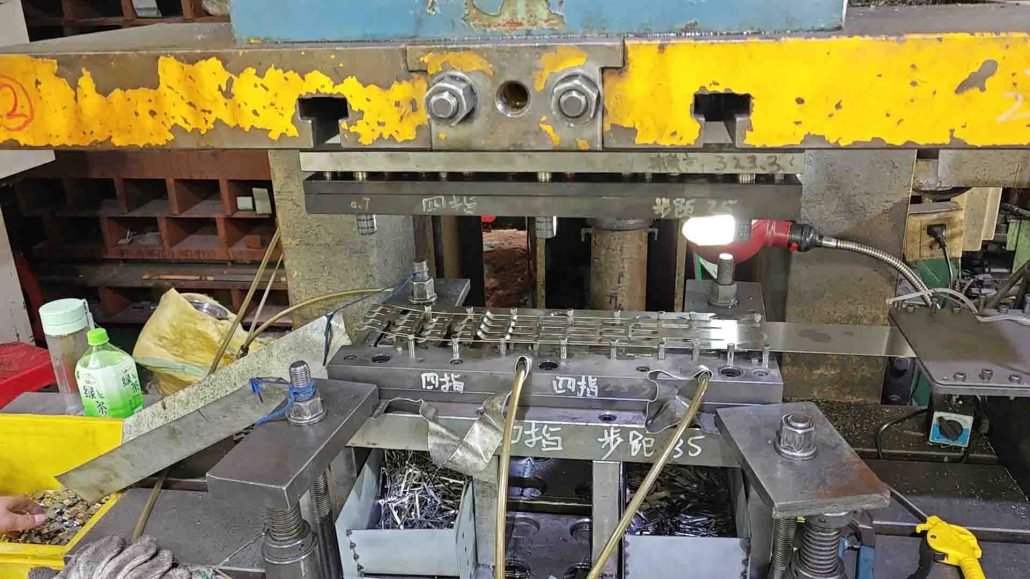Metal stamping is a process that involves shaping and cutting metal sheets using a stamping press. It is a widely used technique in various industries, including automotive, aerospace, and electronics. There are four different types of metal stamping, each with its unique characteristics and applications. In this article, we will explore these four types of metal stamping.
There are four primary types of metal stamping, each with its advantages and disadvantages. The choice of method depends on the specific needs of the project at hand. These methods include:

- Progressive Die Stamping: This is a process in which a metal sheet is fed into a stamping press that moves the sheet through a series of dies, each one cutting and shaping the metal until the desired shape is achieved. The process is efficient and can produce complex parts quickly and accurately.
- Transfer Stamping: This method is similar to progressive die stamping, but the metal sheet is transferred from one stamping press to another, with each press performing a specific operation. This technique is often used for parts with complex shapes or features that are difficult to produce using a single press.
- Blanking: This process involves cutting a flat piece of metal into a specific shape or size. It is often used to create parts that will be further processed through other stamping methods. Blanking is a simple and cost-effective method that is ideal for producing large quantities of parts.
- Piercing: This method involves cutting a hole or opening in a metal sheet. It is often used to create holes for screws or other fasteners. Piercing is a versatile technique that can be used to produce a wide range of part shapes and sizes.
In conclusion, metal stamping is a versatile technique that is used in various industries to create metal parts. There are four different types of metal stamping, including blanking, piercing, bending, and drawing. Each type of metal stamping has its unique applications and characteristics. By understanding the different types of metal stamping, manufacturers can choose the best technique for their specific needs.
Pros and Cons of Four Different Types of Metal Stamping
When it comes to metal stamping, there are four main types that are commonly used. Each type has its own advantages and disadvantages that are essential to consider when deciding which method to use for your specific project. Here are the pros and cons of the four different types of metal stamping:
1. Progressive Die Stamping
Progressive die stamping is a metal stamping method that is suitable for high-volume production runs. It is a fast and efficient method that allows multiple operations to be performed in one pass. This method also provides consistent and precise results as the die is stationary. However, it comes with a few disadvantages. The cost of tooling is relatively high because a custom die must be created for each part design. Additionally, this method is not suitable for prototypes or low-volume runs because of its limited flexibility. Any changes to the design require a new die to be made, making it a more expensive option.

Pros
- High efficiency and speed, as multiple operations can be performed in one pass
- Consistent and precise results, as the die is stationary
- Suitable for high-volume production runs
Cons
- Expensive tooling costs, as a custom die must be created for each part design
- Not suitable for prototypes or low-volume runs
- Limited flexibility, as changes to the design require a new die to be made
2. Transfer Die Stamping
Transfer die stamping is another metal stamping method that is suitable for high-volume production runs. It is similar to progressive die stamping, but it offers more flexibility. The dies used in transfer die stamping can be modified to accommodate design changes, which is not possible in progressive die stamping. The tooling costs for transfer die stamping are also relatively high, but it provides consistent and precise results, making it a good option for high-volume production runs.
Pros
- High efficiency and speed, as multiple operations can be performed in one pass
- Consistent and precise results, as the die is stationary
- Suitable for high-volume production runs
- More flexibility than progressive die stamping, as the die can be modified to accommodate design changes
Cons
- Expensive tooling costs, as a custom die must be created for each part design
- Not suitable for prototypes or low-volume runs
3. Blanking
Blanking is a metal stamping method that is suitable for prototypes and low-volume runs. It uses a standard die that can be used for multiple part designs, making the tooling cost lower than the cost of the other metal stamping methods. Blanking can also be combined with other metal forming processes, such as bending and drawing. However, this method has lower production speeds than die stamping methods, and the results are less precise because the die is not stationary.

Pros
- Low tooling costs, as a standard die can be used for multiple part designs
- Suitable for prototypes and low-volume runs
- Can be combined with other metal forming processes, such as bending and drawing
Cons
- Lower production speeds than die stamping methods
- Less precise results, as the die is not stationary
4. Coining
Coining is a metal stamping method that is suitable for prototypes and low-volume runs. It is a method that creates high precision and surface finishes and can be used to create complex shapes. However, it is limited to creating small parts, and the production speed is slower than die stamping methods. Additionally, the tooling costs for coining are higher than the costs of blanking.
Pros
- High precision and surface finish
- Can be used to create complex shapes
- Suitable for prototypes and low-volume runs
Cons
- Limited to creating small parts
- Lower production speeds than die stamping methods
- Higher tooling costs than blanking
Overall, the choice of metal stamping method will depend on the specific requirements of your project. Factors such as production volume, part complexity, and tooling costs should all be considered when making a decision. Each method has its own advantages and disadvantages, and it is important to choose the method that best suits your project’s needs.


